mobile Ansicht, to the English Version tap the flag
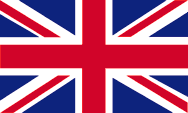

• Flagge
• historische Flaggen
• Bedeutung/Ursprung der Flagge
• Wappen
• Bedeutung/Ursprung des Wappens
• Landkarte
• Zahlen und Fakten
• Geschichte
• Ursprung des Landesnamens
• regionale Flaggen
– Labrador
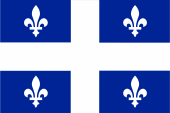
Flagge der Provinz Québec,
Seitenverhältnis = 2:3,
Quelle: Corel Draw 4






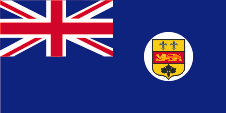
1868–1920,
Flagge der Regierung (Staatsflagge),
Seitenverhältnis = 1:2,
Quelle, nach:
Flags of the World



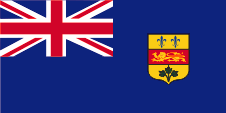
1920–1948,
Flagge der Regierung (Staatsflagge),
Seitenverhältnis = 1:2,
Quelle, nach:
Flags of the World



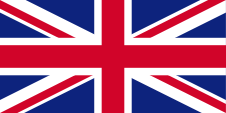
bis 1948,
The Royal Union Flag,
Seitenverhältnis = 1:2,
Quelle, nach:
Flags of the World




Die Flagge von Québec wurde offiziell erstmals am 21.01.1948 gehisst. Sie zeigt eine Gestaltung ähnlich der französischen Handelsflagge von vor 1789, ein weißes Kreuz auf blauem Grund. Damit werden die Verbindungen zum Mutterland Frankreich und auch der Wunsch nach kultureller, z.T. auch politischer Unabhängigkeit zum Ausdruck gebracht. In den vier blauen Feldern sind weiße Lilien zu sehen, ein typisch französisches Symbol, und die Heraldik des französischen Königsgeschlechts der Bourbonen welches 1589–1792 und 1814–1830 in Frankreich herrschte. Die in Kanada lebenden Franzosen kamen ab 1763 unter die britische Krone und hatten britische Flaggen zu verwenden, womit sie sich nur schwer abfanden. In den Jahren 1837 und 1838 kam es sogar zur Niederkanada-Rebellion, bei der als Symbol eine grün-weiß-rote Flagge gezeigt wurde, die Parteiflagge der "Parti Canadien" (Parti Patriote). Später zeigten die Frankokanadier einfach die französische Trikolore. Bis 1868 hätte von den Dienststellen der Provinzen offiziell der britische Union Jack, die sogenannte Royal Union Flag, verwendet werden müssen, oder aber (ab 1868 im Prinzip nur noch) die kanadische blaue Dienstflagge, der typische Britische Blue Ensign, mit dem Wappenschild Kanadas im wehenden Ende. Dennoch hatten die Provinzbehörden eigene Siegel und später auch Wappen, die eigenmächtig im wehenden Ende auf der blauen Dienstflagge platziert wurden. Für dieses Verfahren hätte eine Genehmigung der britischen Behörden vorliegen müssen, was jedoch nicht der Fall war, aber toleriert wurde. Privatpersonen hatten den Union Jack zu verwenden und ab 1892 den sogenannten Red Ensign, die rote Version der kanadischen Flagge mit dem Union Jack in der Oberecke und dem Wappen Kanadas im wehenden Ende. Die Blauen Ensigns sind als Dienstflaggen jedoch nicht sicher überliefert, denn am 21. Januar 1948 wurde auf dem Parlamentsgebäude The Royal Union Flag eingeholt und durch die heutige Provinzflagge ersetzt. Die Frankokanadier (die Mehrheit der Bevölkerung von Québec) waren im Ensign-Flaggensystem nicht vorgesehen, das starke britische Element auf den Flaggen ließ eine neue Flagge für die Frankokanadier entstehen, die "Carillon", 1902 von einem Pfarrer geschaffen. Diese Flagge orientiert sich am vorrevolutionären Frankreich, zeigte, wie die heutige Flagge, ein weißes Kreuz auf Blau, jedoch trugen die vier Ecken je eine goldene Lilie, die in Richtung Flaggenmitte ausgerichtet waren. Sehr verbreitet war diese Flagge aber nie. Im Zuge der allmählichen Trennung Kanadas von Großbritannien und der immer selbstbewusster auftretenden französischsprachigen Bevölkerung führte Québec 1948 die heutige Flagge ein. Das Blau ist als Pantone 293 festgelegt, häufig sieht man in der Praxis aber ein helleres Blau. Auch werden häufig Flaggen im Format 1:2 verwendet, was ebenfalls nicht offiziell ist.
Quelle:
Flaggen Enzyklopädie,
Wikipedia (EN)


1868–1939,
Wappenschild von Québec,
Quelle, nach:
Flags of the World

seit 1939,
Wappenschild von Québec,
Quelle, nach:
Flags of the World

Es gibt ein reguläres Wappen für Québec, mit Postament, Schildhaltern, einer Wappenkrone und dem Motto. Hier dargestellt ist nur der zentrale Teil des Wappens, der Wappenschild. Das Wappenschild von Québec ist horizontal dreigeteilt. Der obere Teil zeigt drei goldene Lilien auf dunkelblauem Grund (Heraldik Frankreichs unter den Bourbonen), in der Mitte ein goldener Löwe auf rotem Grund (britische Heraldik), im unteren Teil drei grüne Ahornblätter auf goldenem Grund (altes Wahrzeichen Kanadas). Vor 1939 zeigte das obere Feld zwei blaue Lilien auf goldenen Grund. Mit der Übernahme des französischen Designs für die Flagge wurde auch das obere Feld der historischen französischen Heraldik angeglichen. Die Änderungen des Jahres 1939 im Wappen haben sich offiziell nicht auf die Flagge der Provinz ausgewirkt. Zwar wurden entsprechende Änderungen vorgenommen, jedoch nie von der britischen Krone bestätigt.
Quelle:
Flags of the World

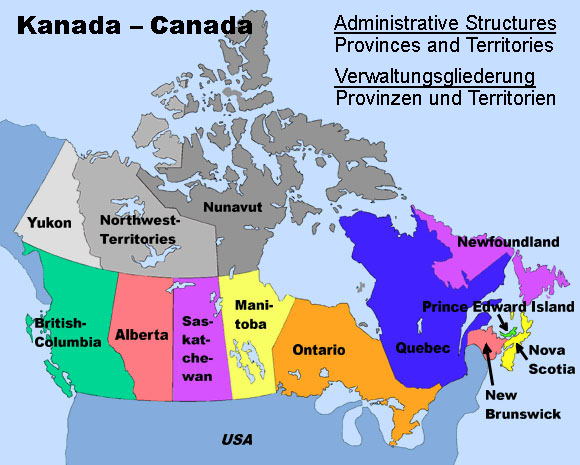
Landkarte/Map:
Volker Preuß

Fläche: 1.542.056 km²
Einwohner: 8.522.800 (2016), davon 77% Frankokanadier (Québécois), 8% Anglokanadier
Bevölkerungsdichte: 6 Ew./km²
Hauptstadt: Québec, 531.902 Ew. (2016)
Amtssprache: Französisch
sonstige Sprachen: Englisch
Währung: kanadische Währung
Zeitzone: MEZ – 6 h
Quelle:
Wikipedia (D),
Wikipedia (FR)

Ursprünglich war das heutige Québec von Indianern der Völker Algonkin und Irokesen besiedelt.
1534–1535 · der Franzose Jacques Cartier erkundet den St.-Lorenz-Strom und nimmt das Land zu beiden Seiten für Frankreich in Besitz, ein Kolonisierungsversuch in der Nähe der heutigen Stadt Québec (bei der Indianersiedlung Stadacona) scheitert jedoch zunächst
1603–1606 · Kolonisierungsexpedition des Samuel de Champlain, erste Siedlungen entstehen
1608 · Champlain gründet die Stadt Québec als Pelzhandelsposten, das indianische Wort "Kebek" bedeutet "wo der Fluss sich verengt", Zusammenfassung aller französischen Besitzungen im heutigen Kanada als "Neufrankreich" mit der Stadt Québec als administrativem Zentrum
1629 · Engländer erobern die Stadt Québec, Rückgabe im Frieden von St.-Germain
1663 · Neufrankreich wird französische Kronkolonie
1756–1763 · Siebenjähriger Krieg zwischen Großbritannien und Frankreich und ihren Verbündeten
1759 · die Engländer unter General Wolfe erobern die Stadt Québec
1763 · Friede von Paris, Frankreich muss alle nordamerikanischen Besitzungen (so auch Québec) an England (Britisch-Nordamerika) abtreten, außer St. Pierre und Miquelon
1774 · den französischen Siedlern in Québec wird das Recht auf ihre eigene Sprache, Kultur und auch Religion garantiert
1775–1776 · Abwehr verschiedener Angriffe von anti-britischen Rebellen aus Neuengland
1776–1783 · Einwanderung von 35 000 königstreuen US-Amerikanern
1791 · Teilung der Provinz Québec in das englischsprachige Oberkanada (das heutige Ontario), und das französischsprachige Unterkanada (das heutige Québec)
1812–1814 · Abwehr verschiedener Angriffe von US-Truppen
1840 · Vereinigung der Provinzen Neuschottland, Neubraunschweig, Québec und Ontario zu einer Kolonie (Kanada) mit einer eigener Verfassung
1867 · Gründung der Konföderation Kanada (Dominion of Canada – mit einem eigenen Parlament) auf Grund von Autonomieforderungen, Konföderation durch die vier Gründungsprovinzen Neubraunschweig, Quebec, Ontario und Neuschottland
1898 · Vergrößerung der Provinz Quebéc im Nordwesten durch Angliederung von Teilen des Ungava-Territoriums
1912 · erneute Vergrößerung der Provinz Quebéc durch Angliederung der Reste des Ungava-Territoriums
1968 · Gründung der Partei von Québec (Parti Québécois, PQ), um eine vollständige Trennung von Kanada zu erreichen
1976 · Sieg der frankokanadischen separatistischen Parti Québécois in Quebec, Forderungen nach Unabhängigkeit für Quebec, Französisch wird in Québec Amtssprache
1980 · Volksabstimmung für Unabhängigkeit in Quebec (knapp abgelehnt)
1990 · Forderungen nach Unabhängigkeit für Quebec
1995 · Volksabstimmung für Unabhängigkeit in Quebec (knapp abgelehnt)
Quelle:
Atlas zur Geschichte,
World Statesmen,
Wikipedia (D),
Discovery '97

Der Name der Provinz Québec geht auf die Stadt Québec zurück, die diesen Namen bei ihrer Gründung erhielt. Der name ist indianischen Ursprungs und bedeutet "wo der Fluss sich verengt".
Quelle:
Handbuch der geographischen Namen


![]()
















